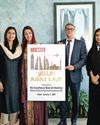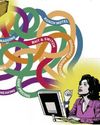
The trajectory of India's economic relationship with China has largely defied the desired course set by New Delhi in the past two decades. Heightened distrust after the Galwan clashes in 2020 has further widened the gap. Modi 3.0 faces two major dilemmas-how to tame the burgeoning trade deficit with China and how to screen foreign direct investment from China while striking a balance between national security and industrial policy. Both these objectives are intertwined with India's ambition to expand its share in global supply chains. Can India steer a creative path in its economic ties with China and harvest gains?
India enjoyed a trade surplus with China till 2005. Between 2005 and 2010, this turned into a $20 billion deficit. India was then importing two dollars worth of goods for every dollar of exports. The two countries then set a joint target of $100 billion for bilateral trade. From India's perspective, this was a preemptive step to rein in the deficit by boosting exports. It was already clear that the demand for Chinese imports in India would grow without much encouragement. The target was achieved in 2021 when imports from China grew by a whopping 45 per cent in a single year.
Within a year, trade deficit alone crossed $100 billion, when India’s exports stood at a paltry $17.5 billion. India is now importing almost six dollars worth of goods from China for every dollar of exports.
Ironically, this can be attributed to two triumphs of the Indian economy. One is the consumption story where growing income levels have fuelled the demand for finished products from China. Second is the success of the ‘Make in India’ campaign which has expanded India’s manufacturing sector and global exports on the back of intermediate products imported from China.
Esta historia es de la edición July 21, 2024 de THE WEEK India.
Comience su prueba gratuita de Magzter GOLD de 7 días para acceder a miles de historias premium seleccionadas y a más de 9,000 revistas y periódicos.
Ya eres suscriptor ? Conectar
Esta historia es de la edición July 21, 2024 de THE WEEK India.
Comience su prueba gratuita de Magzter GOLD de 7 días para acceder a miles de historias premium seleccionadas y a más de 9,000 revistas y periódicos.
Ya eres suscriptor? Conectar

Lessons in leadership
When I began my career at Hindustan Lever (as HUL was then called), I was deeply inspired by our chairman, Dr Ashok S. Ganguly.

Political colours
One of the greatest fashion statements of recent times was made in the Parliament's winter session by Rahul Gandhi and some opposition colleagues. India's most news-making politician (since his landmark Bharat Jodo Yatra) gave up his signature white polo T-shirt for a blue one.

Chat roam
Vox pop content is seeing an uptick in India, with creators making conversations on current and social issues fun and funny

Back home with BANNG
Michelin star-winning chef Garima Arora, who recently opened her first restaurant in India, on all things food and family

One supercalifragilisticexpialidocious New Year
Once Christmas is over, tension mounts in our home as the little woman and I start ticking off the days. We both remain on edge because we dread the coming of the New Year—a time when the whole world goes crazy and adopts resolutions. We, too, make New Year promises and our ‘list of past resolutions’ is very long and impressive. Unfortunately, we are complete failures at keeping them and our ‘list of resolutions not kept’ is equally long and equally impressive.

Six or out?
Cricket is a quasi-religion in India. And our pantheon of cricketers is worshipped with a fervour bordering on hysteria.

DOWN AND UNDER THE WEATHER
After their flop show in Australia, Virat Kohli and Rohit Sharma will have to live on current form rather than past glory

The new in news
THE WEEK and DataLEADS partner to revolutionise news with fact-checks, data and Live Journalism

Hello Middle East
Reem Al-Hashimy, UAE minister of state for international cooperation, inaugurates a special Middle East section on THE WEEK website

BAIT CLICK
Dark patterns fool millions of Indians every day. The government is finally acting, but it just may not be enough